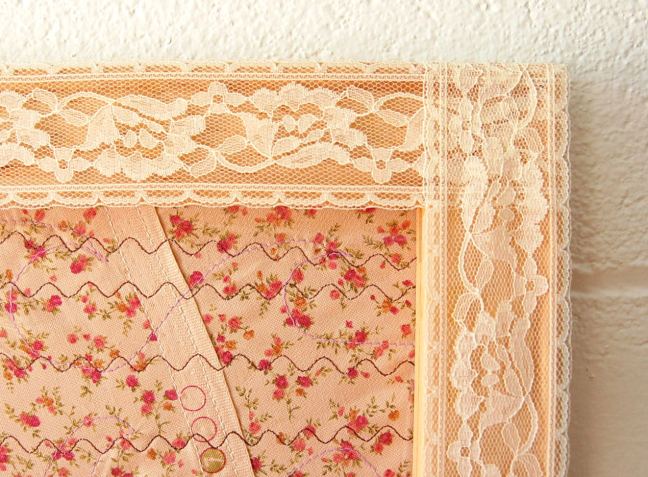This installment of Making It, Ourselves feels very different from the last one (about my Bellows cardigan). The Bellows post came at the end of a 2-month-long process. Today’s is the result of just an afternoon of labor. Partly, that’s the difference between knitting and sewing. But also it’s the difference between a garment that I hope to wear for ages and a piece of quiet art that doesn’t need to fit any particular dimensions; it just needs to serve as a little reminder, a little tribute to the 19th-century seamstresses whose bodies were exploited and exhausted—and sometimes excited by the immoral rhythms of their sewing machines. (<– See last month’s History Project for more on that.) So, what I’ve made is not a perfect example of master sewing (not even close!), but it’ll hang on my wall and send out a reminding wave whenever I pass by.
When I thought about what might constitute a fitting homage to the excited seamstresses, I knew that it would have to be created using my sewing machine (obvs) and that its design would be based on rhythm and repetition. A wave motif seemed appropriate, as it satisfied the rhythmic-and-repetitive requirement and also could capture the back-and-forth surges of the act of sewing (especially as it would have been strenuously enacted on those first sewing machines). Additionally, I had the metaphorical meanings of a wave in mind—the experience of “waves” of pain or “waves” of pleasure. With these ideas in mind, I gathered my materials and set to work.
Materials:
*a floral fabric from my stash (a visual reference to the images of femininity that emerged in that era)
*some ivory lace from my grandmother’s sewing bin (a nod to all generations of crafters who have come before me—and also a whimsical, delicate touch to represent their secret pleasures)
*dark brown thread (to be used for the regular, automated waves created by the pre-programmed sewing machine—this darker color is intended to stand out more than the lighter purple color)
*light purple thread (to be used for the freeform, oceanic waves that subtly writhe underneath—this color choice might be viewed as simply “feminine” or it might be viewed as a reference to the early incarnation of a “lavender scare” that informed male physicians’ concern about the sewing machine’s potential lesbian effects)
*a simple wood frame and a staple gun
Design:
The machine-made waves symbolize the seamstresses’ repetitive, regulated labor—the long hours spent seated at the machine that liberated them from hand stitching but created a new form of exhausting movement. The lavender waves, sewn first and thus subtly underneath the darker ones, represent a different kind of repetitive rhythm—the waves of pleasure that, for some, were the secret side effect of such repetitive movements.
From a distance, it’s hard to see the stitching at all; it just looks like framed floral fabric. When you step closer, though, you begin to notice the construction that went into the piece, the labor that is only subtly visible on the surface of the fabric. I’ll be honest: that wasn’t intentional. It’s just hard to see the thread weights and colors that I chose (especially the purple). But in the end, I like that effect so much that I might as well have chosen it deliberately. It will remind me to look more closely at garments and objects, to think about the labor (or pleasure) that went into their making.
One detail that was intentional is the visibility of the printed fabric edging—the diagonal line that numerically depicts the fabric’s color palette and gives printing information. This inclusion gives the piece a modern touch, since the fabric in a 19th-century factory would not have featured such an edge. Also, in a more straightforward way, it allows the viewer to see exactly how the fabric pieces are connected, making visible a joining that would normally be hidden.
So that’s it. A sweet little square that commemorates a bittersweet moment in textile history when the invention that saved women hours of labor also exposed them to new dimensions of sexual critique.







